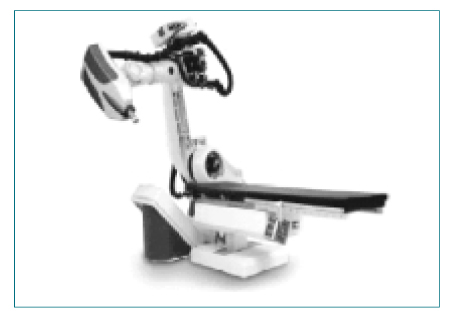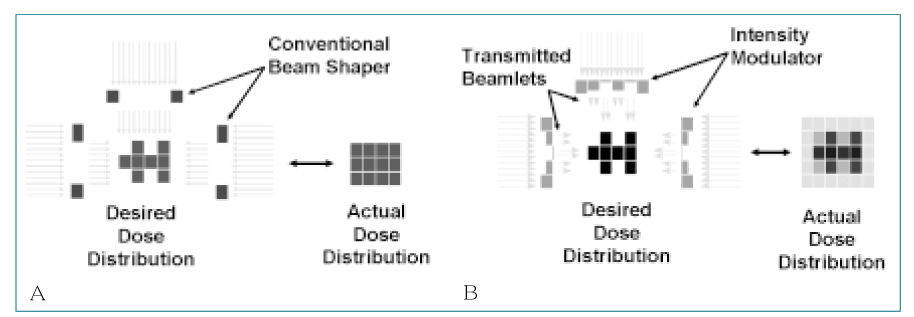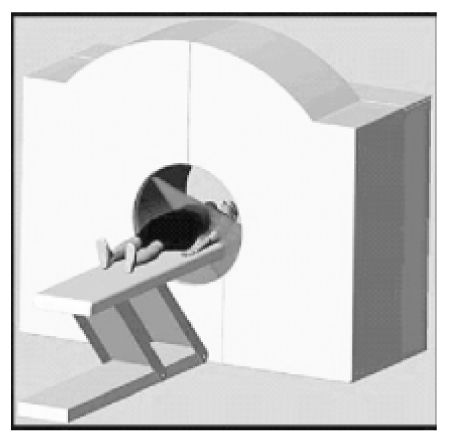J Korean Med Assoc.
2004 Jul;47(7):663-671. 10.5124/jkma.2004.47.7.663.
High Precision Radiotherapy
- Affiliations
-
- 1Department of Radiation Oncology, Yonsei University College of Medicine, Severance Hospital / Yonsei Cancer Center, Korea. cglee1023@yumc.yonsei.ac.kr
- KMID: 2183485
- DOI: http://doi.org/10.5124/jkma.2004.47.7.663
Abstract
- The technical advances that have been achieved over the last decade in the area of 3-dimensional radiotherapy treatment planning capabilities and new and more flexible hardware capabilities, such as computer-controlled treatments, multileaf collimators, and real-time portal imaging devices, have brought about 3-dimensional conformal radiation therapy. For the purpose of highly conformal radiation therapy, a variety of radiation treatment techniques and treatment machines such as stereotactic radiosurgery(SRS) using gamma-knife, stereotactic radiotherapy(SRT) using linear accelerator, and stereotactic whole body radiotherapy have been invented. Intensity-modulated radiation therapy(IMRT) is a new and evolving technological advance in high-precision radiation therapy. It is an extension of 3-dimensional conformal radiotherapy(3-DCRT) that allows the delivery of highly complex isodose profiles to the target, while minimizing radiation exposure to surrounding normal tissues. Image-guided adaptive radiotherapy(IGRT) combines scanning and radiation equipment, to provide images of the patient's organs in the treatment position, at the time of the treatment, optimizing the accuracy and precision of the radiotherapy. Respiratory-gated radiotherapy was developed to overcome the motion of organs. Most high precision radiation therapy approaches increase the time and efforts required by physicians and physicists, because optimization systems are not yet robust enough to provide automated solutions for all disease sites, and routine QA testing is still quite time-consuming. Preliminary clinical experiences of high precision radiation therapy have been encouraging by high rates of local control and decrease of toxicity. This article provides an overview of high precision radiotherapy such as 3-DCRT, SRS, SRT, Cyberknife, IMRT, and IGRT.
Figure
Cited by 1 articles
-
Evolution of Radiotherapy: High-precision Radiotherapy
Yong Bae Kim, Chang-Ok Suh
J Korean Med Assoc. 2008;51(7):604-611. doi: 10.5124/jkma.2008.51.7.604.
Reference
-
1. Purdy JA. Advances in three-dimensional treatment planning and conformal dose delivery. Semin Oncol. 1997. 24:655–672.2. Armstrong J, Raben A, Zelefsky M, Burt M, Leibel S, Fuks Z, et al. Promising survival with three-dimensional conformal radiation therapy for non-small cell lung cancer. Radiother Oncol. 1997. 44:17–22.
Article3. IMRT Collaborative Working Group. Intensity modulated radiation therapy : current status and issues of interest. Int J Radiat Oncol Biol Phys. 2001. 51:880–914.4. Corn BW, Curran WJ, Shrieve DC, Werner-Wasik M, Loeffler JS. Gunderson LL, Tepper JE, editors. Stereotactic irradiation : linear accelerator and gamma knife. Clinical radiation oncology. 2000. 1st ed. Philadelphia: Churchill Livingstone;217–224.5. Chan AW, Cardinale RM, Loeffler JS. Perez CA, Brady LW, editors. Stereotactic irradiation. Principles and practice of radiation oncology. 2004. 4th ed. Philadelphia: Lippincott Williams & Willkins;410–427.6. Ahn SD, Yi BY, Choi EK, Kim JH, Noh YJ, Chang HS, et al. Preliminary results of stereotactic radiosurgery using stereotactic body frame. J Korean Soc Ther Radiol Oncol. 2000. 18:251–256.7. Kuo JS, Yu C, Petrovich Z, Apuzzo ML. The CyberKnife stereotactic radiosurgery system : description, installation, and an initial evaluation of use and functionality. Neurosurgery. 2003. 53:1235–1239.
Article8. Cho CK. Role of cyberknife in the field of surgical oncology. J Korean Surg Soc. 2004. 66:Suppl. 40–41.9. Mohan R, Low D, Chao KSC, Wu Q, Dong L. Perez CA, Brady LW, editors. Intensity-modulated radiation treatment planning, quality assurance, delivery, and clinical application. Principles and practice of radiation oncology. 2004. 4th ed. Philadelphia: Lippincott Williams & Willkins;314–336.10. Lee P, Xia P, Quivey JM, Sultanem K, Poon I, Fu KK, et al. Intensity-modulated radiotherapy in the treatment of nasopharyngeal carcinoma : an update of the UCSF experience. Int J Radiat Oncol Biol Phys. 2002. 53:12–22.
Article11. Zhen W, Thompson RB, Enke CA. Intensity-modulated radiation therapy (IMRT) : the radiation oncologist's perspective. Medical Dosimetry. 2002. 27:155–159.
Article12. Chao KSC, Low DA, Perez CA, Purdy JA. Intensity-modulated radiation therapy in head and neck cancers : The Mallinckrodt experience. Int J Cancer. 2000. 90:92–103.
Article13. Zelefsky MJ, Fuks Z, Hunt M, Lee HJ, Lombardi D, Leibel SA, et al. High dose radiation delivered by intensity modulated conformal radiotherapy improves the outcome of localized prostate cancer. J Urol. 2001. 166:876–881.
Article14. Dawson LA, Balter JM. Interventions to reduce organ motion effects in radiation delivery. Semin Radiat Oncol. 2004. 14:76–80.
Article15. Mackie TR, Kapatoes J, Ruchala K, Lu W, Wu C, Mehta M, et al. Image guidance for precise conformal radiotherapy. Int J Radiat Oncol Biol Phys. 2003. 56:89–105.
Article
- Full Text Links
- Actions
-
Cited
- CITED
-
- Close
- Share
- Similar articles
-
- Evolution of Radiotherapy: High-precision Radiotherapy
- LINAC-based High-precision Radiotherapy: Radiosurgery, Image-guided Radiotherapy, and Respiratory-gated Radiotherapy
- Message from the Precision and Future Medicine editors to our ad hoc reviewers
- Message from the Precision and Future Medicine editors to our ad hoc reviewers
- Radiation therapy for pediatric brain tumors






